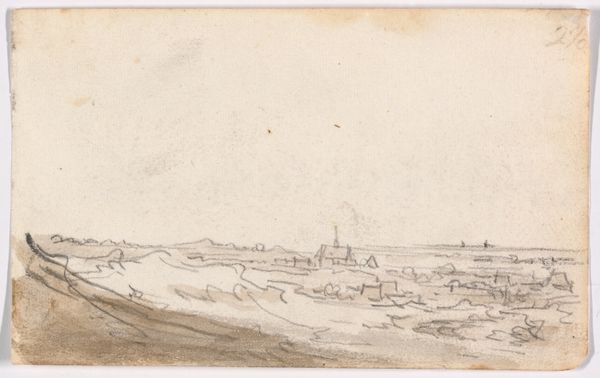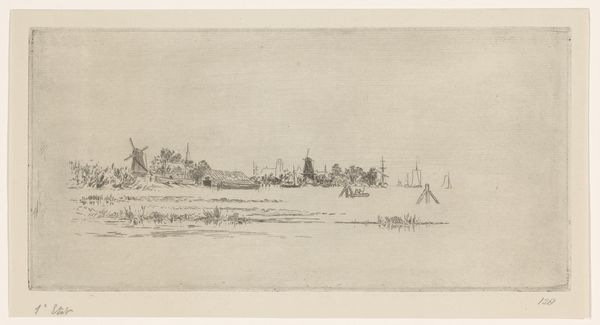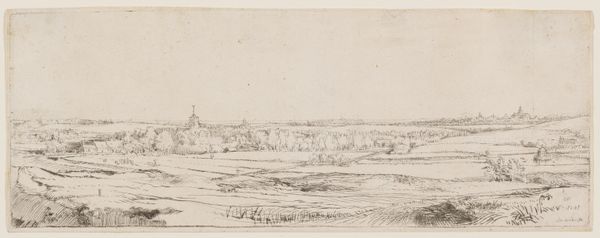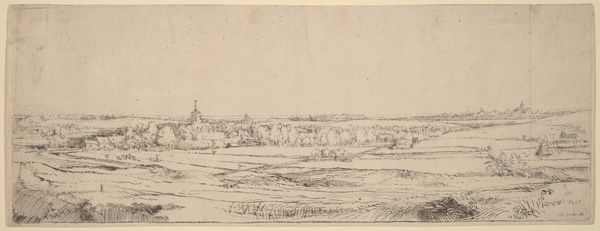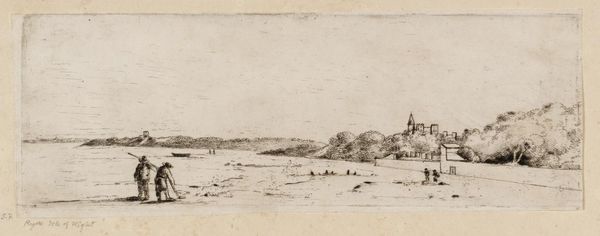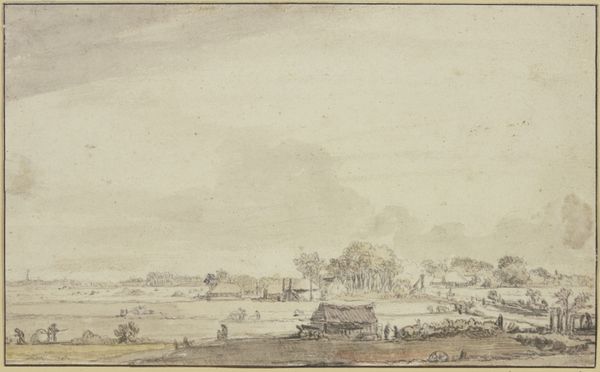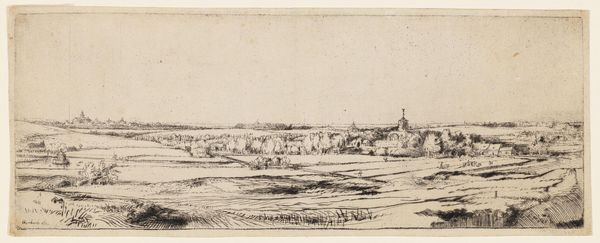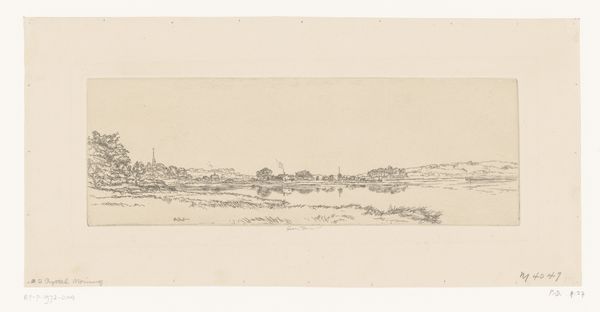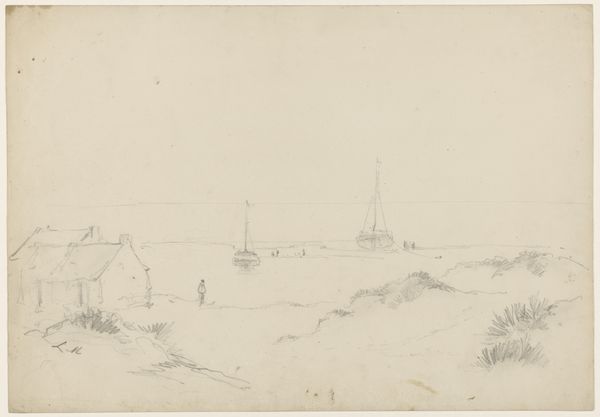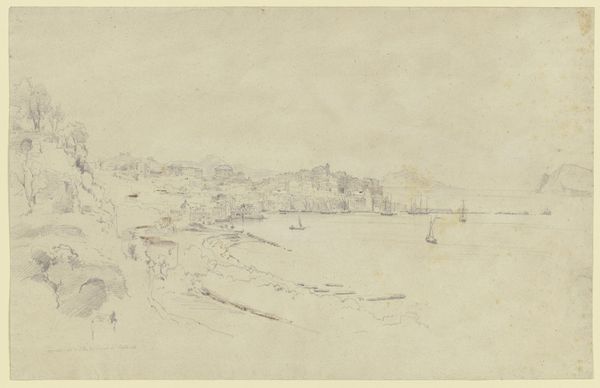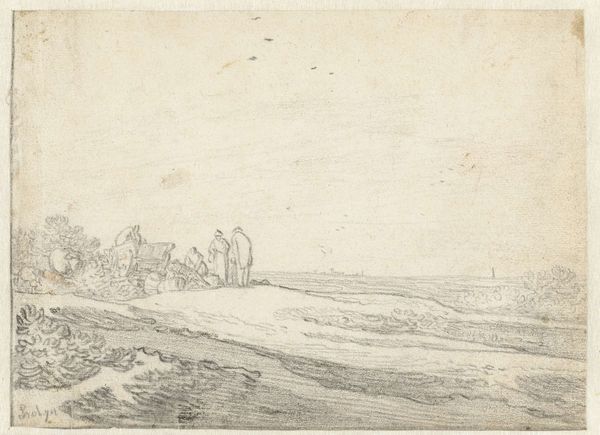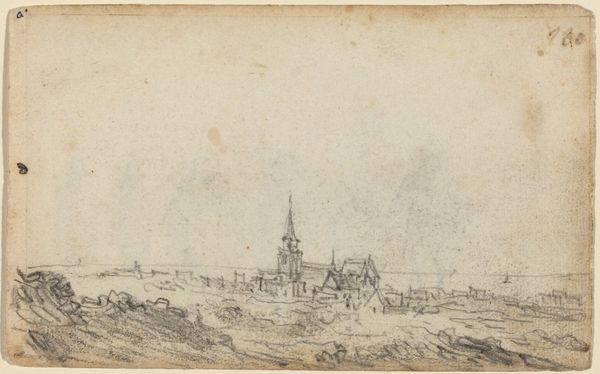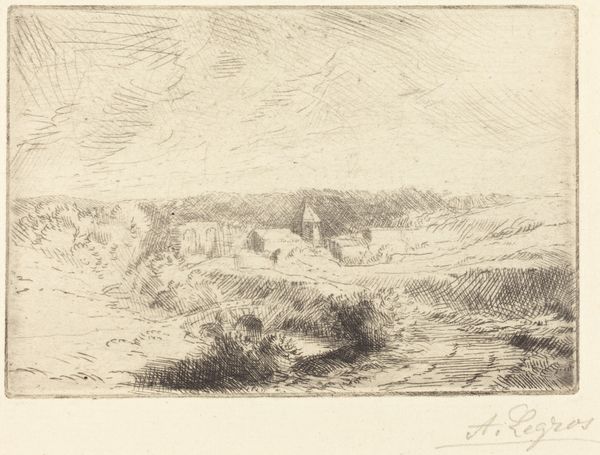
drawing, ink, pencil, chalk, charcoal
#
drawing
#
baroque
#
dutch-golden-age
#
landscape
#
charcoal drawing
#
ink
#
pencil drawing
#
pencil
#
chalk
#
charcoal
Copyright: Public Domain
Curator: We are looking at a work called "Loosduinen near Hague," by Jacob van Ruisdael. It's currently held at the Städel Museum, executed using pencil, chalk, charcoal and ink. Editor: Immediately, I notice the subdued palette, the stark, almost melancholic atmosphere it evokes. The delicate use of line creates an incredible sense of space, despite the limited tonal range. Curator: Ruisdael was a master of capturing the Dutch landscape during the Golden Age, and that artistic identity is so prevalent here. His work frequently featured expansive skies and humble, rural settings. "Loosduinen near Hague" offers a glimpse into the social landscape of the time as well. Loosduinen's role as a village situated so closely to the governing Hague informs the composition; it's both pastoral and quietly influential. Editor: The composition draws the eye toward the horizon line. Notice how the placement of the church steeple punctuates the otherwise unbroken line of the skyline, adding a vertical thrust and symbolic weight? Semiotically, it anchors the scene and perhaps hints at a spiritual presence within the everyday life of the Dutch landscape. Curator: Absolutely. The church acts as more than just an aesthetic element, in fact. Think of the immense social power held by the church in 17th Century Netherlands. Ruisdael uses landscape, but not just in its aesthetic form; he evokes a network of societal interactions. He represents a distinct historical period. The flatness, punctuated only by subtle modulations of tone, reflect the lived realities of the region’s inhabitants. Editor: Looking at the textural contrast in the foreground—the scribbled, dense mark-making juxtaposed with the smoother tones of the distant village—creates depth and a haptic quality. It invites us to feel the rough earth under our feet while our gaze extends to a vast panorama. Curator: Yes, and the lack of a definitive date opens a space for wider cultural interpretation. While unsigned and undated, the drawing nonetheless represents a crucial understanding of how 17th Century Dutch society and its relationship to the natural world intertwines within his work. Editor: Thinking about the materiality, the fact that this evocative landscape exists purely through gradations of grey and brown makes the impact more, not less, striking. Ruisdael knew the communicative power of monochrome. It's the restraint that elevates the work beyond mere depiction. Curator: A brilliant assessment; analyzing "Loosduinen near Hague" from both our perspectives illuminates its structural beauty and cultural narrative so compellingly. Editor: Indeed, a fruitful exploration of both its inherent aesthetic qualities and broader historical resonance.
Comments
No comments
Be the first to comment and join the conversation on the ultimate creative platform.
